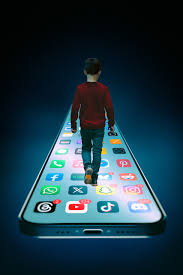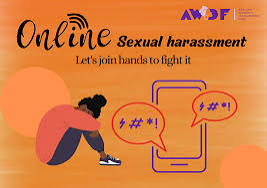Between Trafficking in Person and Modern Slavery
“Human trafficking is as old as humankind. Regrettably, it’s been with us for centuries and centuries. But… it is our hope that the 21st century will be the last century of human trafficking, and that’s what we are all committed to.” Tillerson.
If you think slavery is over or has been abolished, you may be making a great mistake about it as modern slavery is deeper than old but same as old in the crime continuum.
“Today more than 27 million people, many of them women and children, suffer under forced labor and sexual servitude in over 165 countries around the world, including the US” according to US Senator Bob Coker who is championing legislation to end modern slavery globally. Allow me quote him once again- “As I have seen firsthand, the stark reality of modern slavery is unconscionable, demanding the United States and civilized world make a commitment to end it for good”. And I couldn’t have agreed more to this especially when I realized there is United Nation Transnational Organized Crime Convention Resolution 55/25 structured in three protocols thereto, as the only intrument to combat trafficking in person, smuggling of migrant and firerams. But have countries utilize this protocols as ratified, is an entire matter worth discussion another day.
However, modern day slavery is a problem hidden in plain sight, found most in developed world and across the world. From Libya to India, Italy to Spain are roots of slave trade till date where human beings are trafficked and sold as commodities.
Human trafficking, modern day slavery is more pervasive than ever and involves strong and influential networks of people in illegal economic flow. International Labor Organization estimates that nearly 21 million people are victims of forced labor, human trafficking, and sexual exploitation— and this figure is more than at any other time in history.
As I Count Down
One in five victims of trafficking in persons are most vulnerable among women and children -boys and girls separated from their families and forced into prostitution, or labor that makes use of their small hands, like sewing or untangling fishing wire. High unemployment rates and poverty are just two of the factors that put children at risk.
In India, for instance over 100,000 kids are trafficked each year across the border from Rajasthan to its neighboring state of Guajarat. These children are forced to work in cotton fields, often in debt bondage— to pay back what their families owe. I am wondering what's the instrumentality of UNTOC resolution 55/25 and its protocol to prevent, suppress and punish traffickers of women and children? Wondering what and how can concerned citizens work with its government on review mechanism as well to eliminate human trafficking and other serious crimes across board.

Women, refugees, and those fleeing war or conflict are also at higher risk of enslavement. “Trafficking in persons in conflict situations is not a mere possibility but something that happens on a regular basis,” said Maria Grazia Giammarinaro, the U.N.’s special rapporteur on human trafficking, in October 2016.
Women, refugees, and those fleeing war or conflict are also at higher risk of enslavement. “Trafficking in persons in conflict situations is not a mere possibility but something that happens on a regular basis,” said Maria Grazia Giammarinaro, the U.N.’s special rapporteur on human trafficking, in October 2016.
But modern slavery isn’t just a morally abhorrent crime. It’s a lucrative industry— human trafficking is one of the largest international crime industries in the world. Each year, forced labor in sectors like domestic work, agriculture, construction, manufacturing, and entertainment generates $150 billion in illegal profits.
Drug dealers, money launderers, or arms dealers are in part enabled or funded by human trafficking activities. And some governments not mentioning names, depend on forced labor to elicit revenue. Though I can hardly be proven otherwise!
Whereas in some countries like the U.S. consumers also play an unwitting role. Some products Americans use and enjoy may have been produced by those in forced servitude. The U.S. State Department works to alert businesses during these situations so they may take direct action to insure they aren’t complicit in human trafficking.
But my little joy is that the U.S. is taking action, leading global efforts to address human trafficking. Its policy involves three “P”s: preventing trafficking, protecting victims, and prosecuting traffickers.
So now, what's the U.S is doing?
Months and few years ago, at the Congress to End Modern Slavery Initiative, legislation introduced by Senate Foreign Relations Committee Chairman Bob Corker and supported by a bipartisan Congress, faith-based organizations like Bread for the world and World Vision as well as countless individuals pushed for this law to be effected in the U.S and across the world.
“By providing strong U.S. leadership and leveraging our limited foreign aid dollars, this initiative will work with foreign governments and philanthropic organizations to match the funding being provided by the United States and create a coordinated effort to implement best practices to eliminate modern slavery and human trafficking around the globe,” stated Corker.
However, the greater challenge especially for developed world and Africa in particular is, smuggling of migrants by air, land and or sea. The increasing illegal manufacturing of small firearms and components, sales and poliferation which have helped organized crime group distort sustainable development and fuelled conflict crisis across developed nations.
#WhatsOn #Civilsocietystakeholders #UNTOC #UNODC #SE4U #CSUMULTISTAKEHOLDERS #EndModernSlavery
#WhatsOn #Civilsocietystakeholders #UNTOC #UNODC #SE4U #CSUMULTISTAKEHOLDERS #EndModernSlavery


Comments
Post a Comment